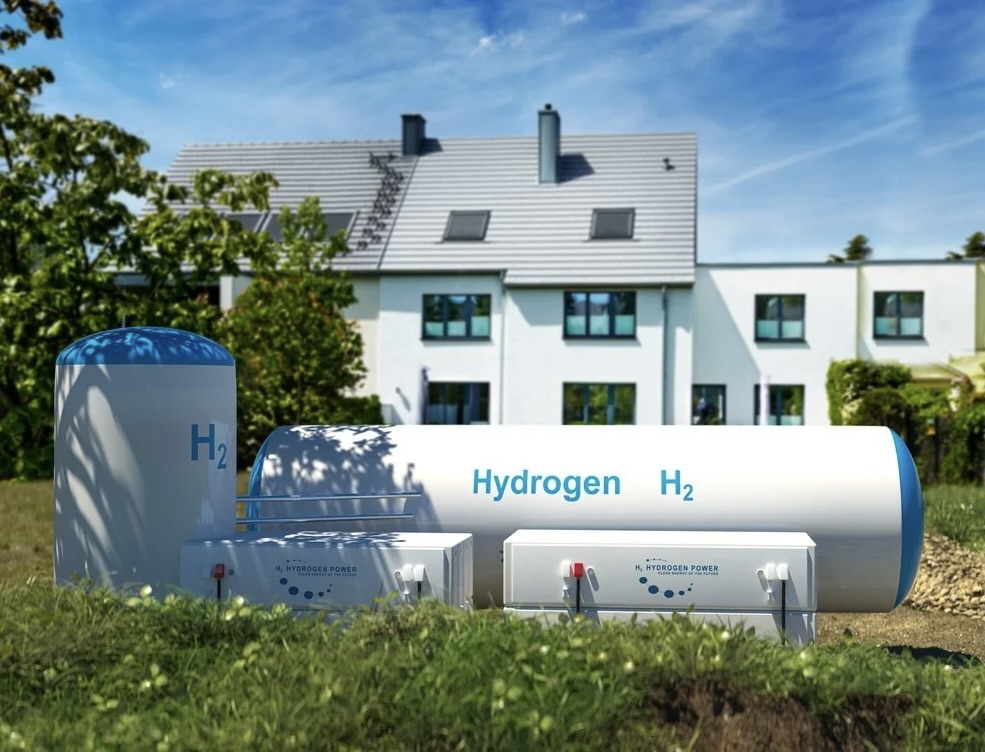Hydrogen’s vast reserves make it an attractive option amid increased demand for renewables to meet its stated decarbonization targets. As technology improves and production costs decrease, green hydrogen could become increasingly important in shaping a greener future.
 Image Credit: Alexander Kirch/Shutterstock.com
Image Credit: Alexander Kirch/Shutterstock.com
The Current Hydrogen Situation
The vast majority of hydrogen generated globally is grey, i.e., manufactured from natural gas. Grey hydrogen is inexpensive without a price on carbon emissions, but it increases the difficulty of achieving environmental sustainability.
In contrast, green hydrogen is a better long-term solution alternative for decarbonizing economies, as its production does not involve fossil fuels and greenhouse gases. Instead, it is produced via electrolysis using renewable electricity, due to which it is more expensive than grey.
However, its production cost will reduce over time due to continually decreasing renewable electricity costs, making green hydrogen more affordable. The challenge is in anticipating these changes and acting accordingly.
Growing Industrial Demand for Green Hydrogen
The global green hydrogen production market is projected to reach 225.55 billion USD by 2030, expanding at a compound annual growth rate of 6.4% over the forecast period. This growth is driven by the rising demand for cleaner fuel and the expansion of government laws governing the decarbonization of petroleum products.
Over the coming years, it is anticipated that countries will improve the industry environment as they realize the untapped potential of green hydrogen.
Industrial leaders are working on technological progress to reduce the electrolyzer units’ cost, accelerating the commercialization of green hydrogen. On the other hand, market participants focus on implementing various strategic programs, such as partnerships, joint ventures, acquisitions, and mergers, to strengthen their market position in the emerging hydrogen market.
Germany is heading for a hydrogen economy based on green hydrogen. The German government decided to pursue an active industrial policy and, on June 10, approved the long-prepared National Hydrogen Strategy worth 9 billion euros. The objective is to meet the pledge made by Germany and the European Union to reduce greenhouse gas emissions by 2050 under the Paris Climate Agreement.
The UK plans to deploy 5 GW of low-carbon hydrogen production capacity by 2030, which should help ensure that 20-35% of the country’s energy consumption is hydrogen by 2050. The strategy sees the UK’s hydrogen economy at £900m and 9,000 jobs by 2030, rising to £13bn and 100,000 jobs by 2050.
Hydrogen future of logistics
In 2050, most heavy road transport will run on hydrogen and electricity. It is predicted that by 2050 in the EU, 35% of trucks will be electric, 55% will run on hydrogen, and 10% will run on bio-methane.
Long-Term Uncertainty, Short-Term Scarcity Weighing On Green Hydrogen
The scientific journal Nature Energy published an article by scientists from the Potsdam Institute for Climate Impact Research and other scientific institutions on the prospects of a future green hydrogen market.
According to the researchers, rapidly increasing the hydrogen supply is difficult. Therefore, even if electrolysis capacity grows as fast as solar and wind power, the supply of green hydrogen will remain insufficient in the short term. As for the long-term perspective, it is characterized by high uncertainty.
Despite the exponential growth in hydrogen projects, green hydrogen is more than 75% likely to provide less than 1% of final energy consumption globally until 2035.
The planned investments and efforts to expand the green hydrogen market will not be enough for the fuel to acquire an important role in the energy industry. By 2040, an increase in the share can be expected, but there is high uncertainty in determining specific values.
Long-term uncertainty and short-term low volumes discourage investment in green hydrogen end-use and infrastructure, reducing the potential of green hydrogen and jeopardizing climate goals.
Green Hydrogen: The Present and Future of Low-Carbon Energy
The global shift to a carbon-free economy will substantially affect current energy value chains and restructure the production-to-consumption lifecycle, significantly affecting stakeholder interactions.
Green hydrogen is gaining political and economic momentum due to its versatility, and it could play a vital role in achieving a carbon-free future. Its widespread implementation will be critical for decarbonizing hard-to-decarbonize energy-intensive industries, such as cement and steel production.
The global demand for green hydrogen is anticipated to increase by 700% by 2050. Such widespread adoption of green hydrogen will have far-reaching effects on current value chains and open economic opportunities for nations strategically positioned in the emerging green hydrogen market.








